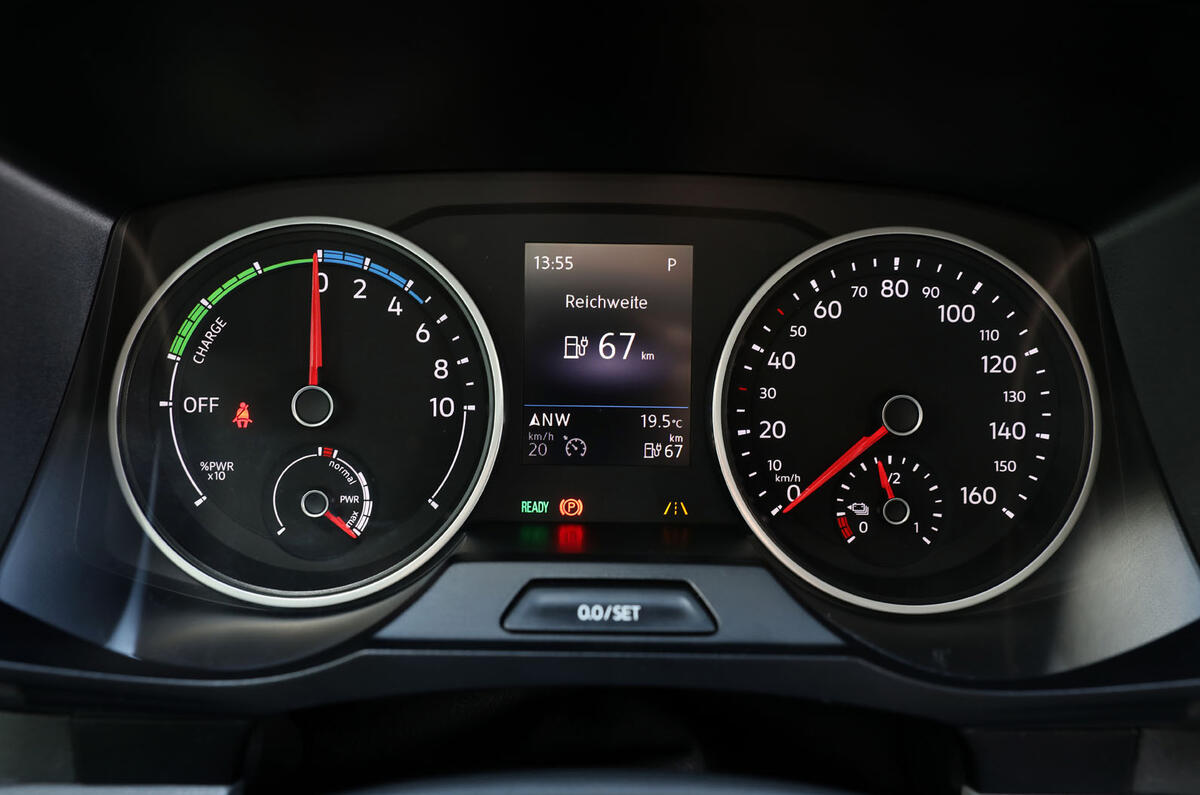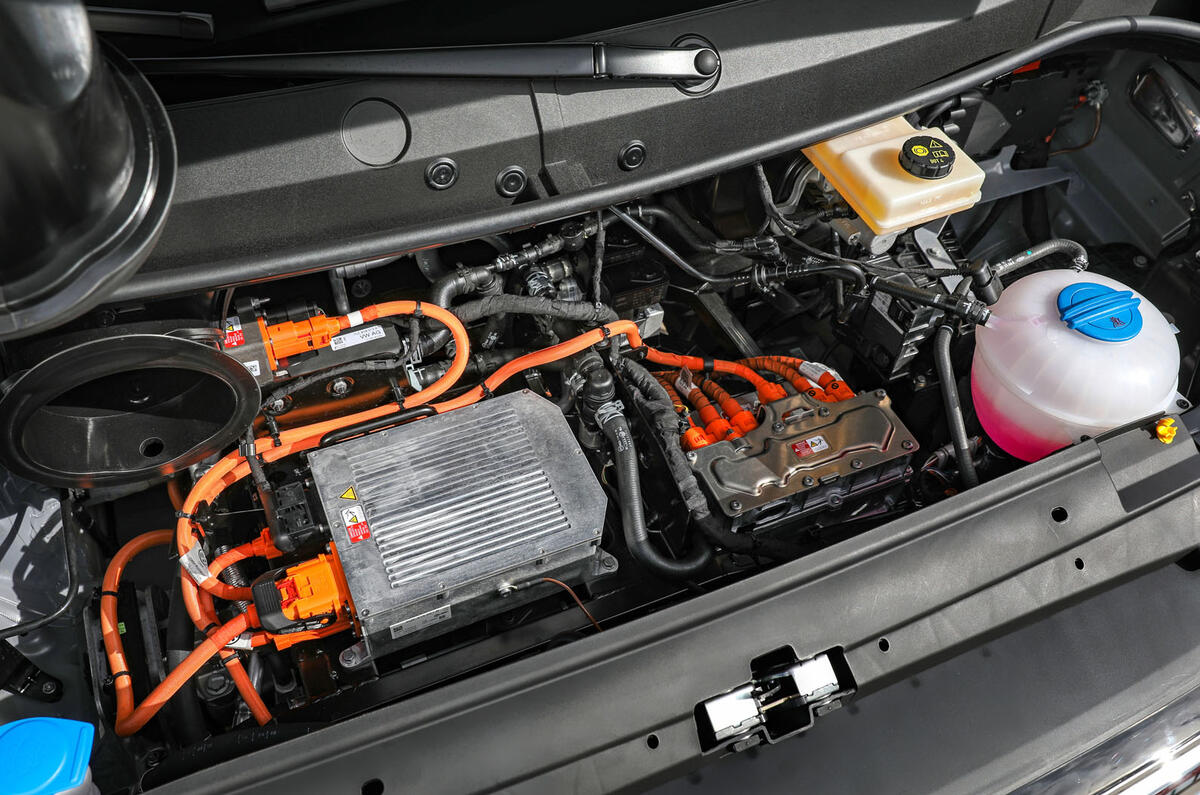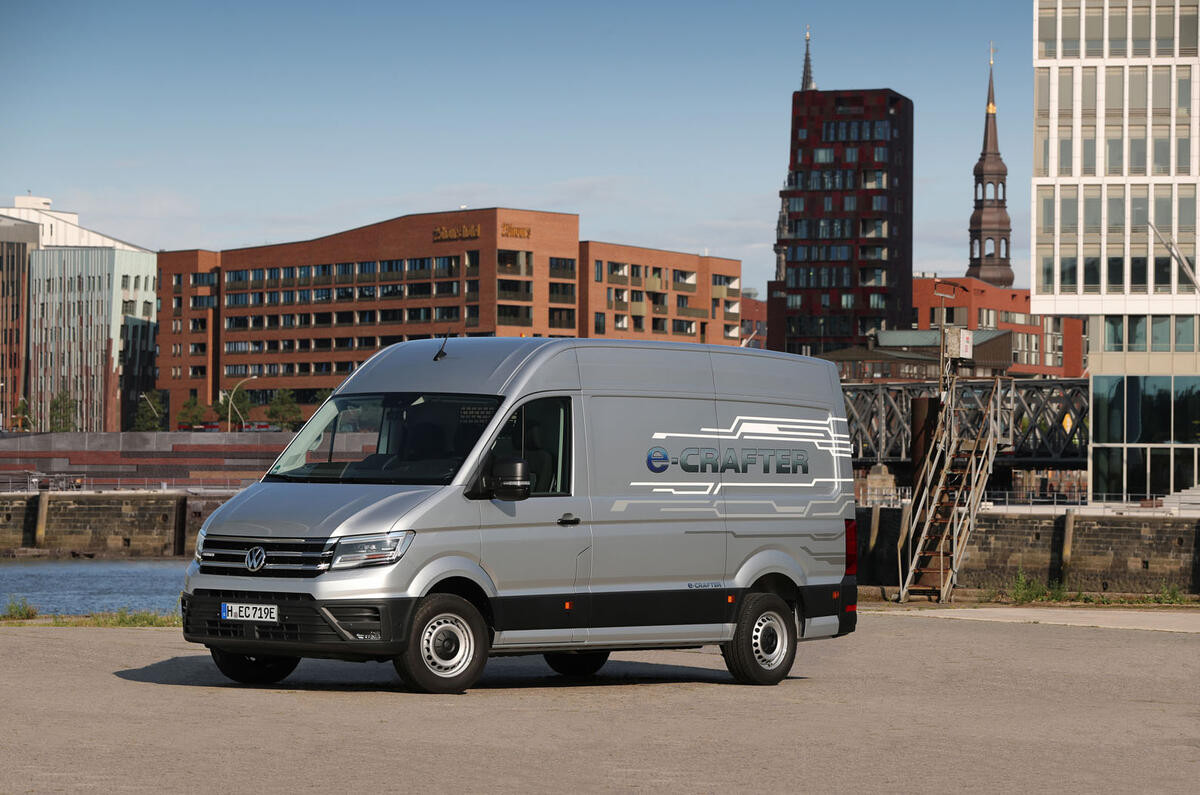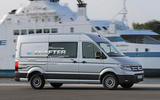This, in case the photos above hadn’t given it away already, is a 3.5-tonne van. Certainly not the typical test subject for a review on these pages — but it's absolutely worthy of one.
That’s because the e-Crafter is Volkswagen’s first fully electric commercial vehicle. Well, it is if you don’t count the 1970 T2 Electric Transporter. But seeing how VW only managed to sell 20 of those, this is much more deserving of the accolade.
Aimed at couriers, craftsmen and other 'last-mile' deliverers, the van was designed with input from UK businesses, including Gatwick and Heathrow airports. Both took part in trials earlier this year, creating thousands of driver profiles that helped influence the e-Crafter’s final specifications.
VW found that Crafter drivers typically covered 40-60 miles per day and made between 50 and 100 stops during a shift, with a dedicated parking space waiting for them at the depot or office when clocking off.
As a result, the e-Crafter uses the the Volkswagen same 35kW lithium ion battery as the e-Golf, here capable of an estimated 107-mile range and able to be recharged to 80% from a 40kW DC combined charging system in around 45 minutes.
The 100kW electric motor has also been repurposed from the e-Golf. It delivers the same 134bhp and 214lb ft of instant torque as it did in the hatchback, but it has been given an extra round of testing and refinement to ensure it could cope with the e-Crafter’s heavier loads.

































